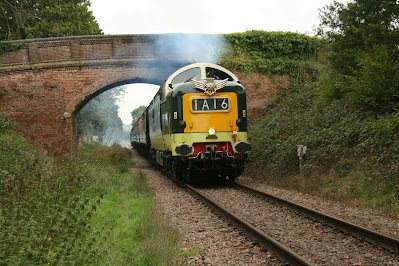My hybrid car confusion
 No, I know that picture is not a hybrid car: bear with me.
No, I know that picture is not a hybrid car: bear with me.I have just started the process of buying a plug-in hybrid car. In principle, I'd love to go for the full electric experience, but there are still problems, as I had the opportunity to point out on Newsnight recently. Electric cars are still too expensive - but the same is true of plug-in hybrids. More significantly, there are range issues and the charging infrastructure is both far too sparse and pricey.
My driving pattern consists of a combination of local driving, which the electric part of a modern plug-in hybrid can entirely cover, and 300 mileish round trips, much of it spent in places where chargers are very few and far between - which is why I still need the petrol side.
For the moment, then, I think I've made the right choice. But I embarrassingly realised when taking a look through the manual for the car I am yet to pick up (yes, I'm the sort of person who reads manuals) that I totally misunderstood how most hybrids work. The blame lies firmly with my teenage enthusiasm for trains.
By my mid-teens I'd got past the trainspotting stage, but loved taking train journeys for the sake of it. If I'd been a bit older, part of the enthusiasm would have been steam locomotives - but I was very much of the diesel age, with my favourite engines to travel behind being Deltics (one pictured above) and Westerns. Westerns ran on what had been the GWR - a region of British Rail that retained the eccentric individuality of Isambard Kingdom Brunel by using diesel hydraulic engines. The output of their diesel engines was transmitted to the wheels by a hydraulic transmission. But Deltics followed the far more common mechanism of being diesel electric.
What this meant was that a Deltic's vast diesel engines generated electricity to power its electric motors. When introduced, Deltics were the most powerful single unit diesel locomotives in the world - the rumble of power they made was music to the ear of train lover. The locomotives contained two Deltic diesel engines, originally designed for marine use.
With my familiarity with diesel electric locomotives, it just seemed obvious to me that hybrid cars used the petrol engine to generate electricity to feed electric drive motors. I even had this model in mind when I test drove one. But reading the manual, I discovered the petrol engine has an automatic gearbox. If the car had an electric transmission there would have been no need for a gearbox. The only possibility was that both the electric motor and the petrol engine drove the wheels. Doh. I still don't really understand why this is the case, as it seems unnecessarily complicated, but on looking into it, most hybrids have such 'parallel' setups rather being series hybrids. It just shows that this 'being greener' business remains quite complicated.
Image from Unsplash by Neil Mewes - the Deltic portrayed (on a preserved railway) carries the thistle emblem of the Flying Scotsman (train as opposed to locomotive), which I travelled on in my teens behind a Deltic.This has been a Green Heretic production. See all my Green Heretic articles here.
These articles will always be free - but if you'd like to support my online work, consider buying a virtual coffee or taking out a membership:
See all Brian's online articles or subscribe to a weekly email free here newest »
newest »




Finally, I should note that a hybrid being "plug in" only makes it "green" if your electricity is green - e.g., from a nuclear power plant or photovoltaic cells. Where I live, electricity isn't green, so there is nothing green about "plugin" hybrid or fully-electric vehicles. However, hybrid cars with relatively small batteries *are* green in the sense that they really use less energy - mostly because of regenerative breaking but also due to their ability to turn off the internal combustion engine. My current hybrid car does on average 24 kilometers per liter - compared to the similarly-sized car I had 15 years ago that did 10 kilometers per liter.